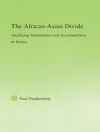Reintroduction of Fish and Wildlife Populations provides a practical step-by-step guide to successfully planning, implementing, and evaluating the reestablishment of animal populations in former habitats or their introduction in new environments. In each chapter, experts in reintroduction biology outline a comprehensive synthesis of core concepts, issues, techniques, and perspectives. This manual and reference supports scientists and managers from fisheries and wildlife professions as they plan reintroductions, initiate releases of individuals, and manage restored populations over time. Covering a broad range of taxonomic groups, ecosystems, and global regions, this edited volume is an essential guide for academics, students, and professionals in natural resource management.
Inhaltsverzeichnis
Contributors
Foreword
Joel Berger
1 • ANIMAL REINTRODUCTION IN THE ANTHROPOCENE
David S. Jachowski, Rob Slotow, Paul L. Angermeier, and Joshua J. Millspaugh
Part 1 • What Are Reintroductions and When Are They Appropriate?
2 • REINTRODUCTION AND OTHER CONSERVATION TRANSLOCATIONS: HISTORY AND FUTURE DEVELOPMENTS
Philip J. Seddon and Doug P. Armstrong
3 • A CONSERVATION PALEOBIOLOGY PERSPECTIVE ON REINTRODUCTION: CONCEPTS, VARIABLES, AND DISCIPLINARY INTEGRATION
R. Lee Lyman
Part 2 • Setting Goals
4 • HUMAN DIMENSIONS INSIGHTS FOR REINTRODUCTIONS OF FISH AND WILDLIFE POPULATIONS
Shaun J. Riley and Camilla Sandström
5 • THE REINTRODUCTION LANDSCAPE: FINDING SUCCESS AT THE INTERSECTION OF ECOLOGICAL, SOCIAL, AND INSTITUTIONAL DIMENSIONS
Jason B. Dunham, Rollie White, Chris S. Allen, Bruce G. Marcot, and Dan Shively
6 • SETTING OBJECTIVES AND DEFINING THE SUCCESS OF REINTRODUCTIONS
Alienor L. M. Chauvenet, Stefano Canessa, and John G. Ewen
7 • DEMOGRAPHIC MODELING FOR REINTRODUCTION DECISION-MAKING
Sarah J. Converse and Doug P. Armstrong
Part 3 • Obstacles to Successful Reintroductions
8 • GENETIC ISSUES IN REINTRODUCTION
Iris Biebach, Deborah M. Leigh, Kasia Sluzek, and Lukas F. Keller
9 • ACCOUNTING FOR POTENTIAL PHYSIOLOGICAL, BEHAVIORAL, AND COMMUNITY-LEVEL RESPONSES TO REINTRODUCTION
David S. Jachowski, Samantha Bremner Harrison, David A. Steen, and Kim Aarestrup
10 • WHY YOU CANNOT IGNORE DISEASE WHEN YOU REINTRODUCE ANIMALS
Erin Muths and Hamish Mc Callum
11 • RELEASE CONSIDERATIONS AND TECHNIQUES TO IMPROVE CONSERVATION TRANSLOCATION SUCCESS
Axel Moehrenschlager and Natasha A. Lloyd
Part 4 • Managing Reintroduced Populations
12 • EFFECTIVE AND PURPOSEFUL MONITORING OF SPECIES REINTRODUCTIONS
Robert A. Gitzen, Barbara J. Keller, Melissa A. Miller, Scott M. Goetz, David A. Steen, David S. Jachowski, James C. Godwin, and Joshua J. Millspaugh
13 • MANAGEMENT OF REINTRODUCED WILDLIFE POPULATIONS
Matt W. Hayward and Rob Slotow
14 • OUTREACH AND ENVIRONMENTAL EDUCATION FOR REINTRODUCTION PROGRAMS
Anna L. George and Estelle A. Sandhaus
15 • THE FUTURE OF ANIMAL REINTRODUCTION
David S. Jachowski, Rob Slotow, Paul L. Angermeier, and Joshua J. Millspaugh
Index
Über den Autor
David S. Jachowski is Assistant Professor of Wildlife Ecology at Clemson University and author of Wild Again: The Struggle to Save the Black-Footed Ferret (UC Press). His scientific work focuses on using a combination of field monitoring, laboratory techniques, and statistical methods to assist in the conservation and restoration of wildlife populations. Joshua J. Millspaugh is the Boone and Crockett Professor of Wildlife Conservation at the University of Montana in Missoula. His other books include Radio-Tracking and Animal Populations, Models for Planning Wildlife Conservation in Large Landscapes, Design and Analysis of Long-Term Ecological Monitoring Studies, and Wildlife Demography.Paul L. Angermeier is a U.S. Geological Survey scientist and Professor in the Virginia Cooperative Fish and Wildlife Research Unit, stationed at Virginia Tech. His research includes topics in ecology and conservation of freshwater fishes, and ecosystem services provided by watersheds.Rob Slotow is Professor at the University of Kwa Zulu-Natal. He has been instrumental in groundbreaking reintroductions of large mammals. His work focuses on strategies for the management of ecologically and economically important large mammals such as lion, elephant, and rhino, as well as on processes influencing biodiversity and conservation management.












